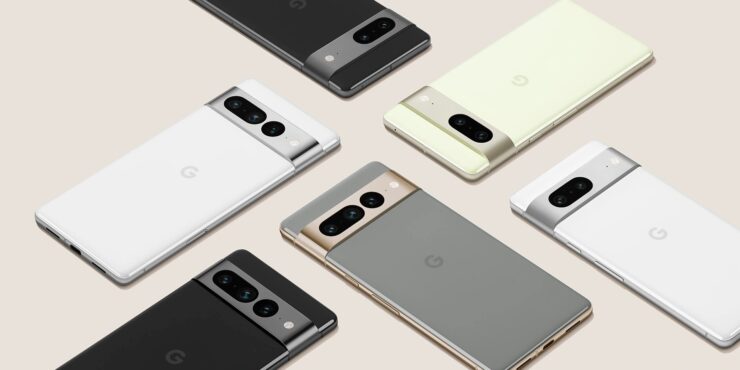Are you looking to revert your Google Pixel 7 or Pixel 7 Pro back to 100 percent stock Android firmware? Whether you’ve participated in Google’s beta programs, experimented with custom ROMs, or simply want to sell your device, this comprehensive guide will walk you through the process step-by-step. Restoring your device to stock Android firmware ensures stability and reliability, making it perfect for those who prefer the original software experience. In this article, we will show you how to bring your Google Pixel 7 back to its factory settings using the Android flash tool or the manual fastboot method.
Why Restore to Stock Android?
Factory data reset may not be enough to completely revert your Google Pixel 7 to stock Android, especially if you’ve installed custom ROMs or kernels on your device. By restoring your device to stock firmware, you can eliminate any modifications and return to the original software provided by Google. This ensures that your device is running on a stable and secure operating system, free from any potential issues that may arise from customizations.
Preparing Your Device
Before you begin the process of reverting your Google Pixel 7 to stock Android firmware, there are a few prerequisites to keep in mind. Firstly, ensure that the bootloader of your Google Pixel 7 is unlocked, as this is necessary for flashing firmware files onto the device. Additionally, make sure you have a USB cable to connect your device to a computer. Now, let’s dive into the steps to revert your device to stock Android.
Step 1: Boot into Fastboot Mode
To start the process, you’ll need to boot your Google Pixel 7 or Pixel 7 Pro into Fastboot mode. If you’re unfamiliar with this process, you can find a guide on how to boot your Pixel device into Fastboot mode here.
Step 2: Download the Factory Image
Open the Google Factory image website on a Google Chrome browser on your PC or laptop. On the left sidebar, click on “Factory images” to ensure you’re downloading the correct files. Search for the firmware file that matches your device and download the latest version available from Google’s Factory Image website.
Step 3: Flash the Firmware
Once you’ve downloaded the firmware file, it’s time to flash it onto your device. There are two methods you can choose from: using the Android flash tool or the manual fastboot method.
Option 1: Android Flash Tool Method
We recommend using the Android flash tool method, as it offers a user-friendly graphical interface that simplifies the process. Here’s how to use the Android flash tool to revert your Google Pixel 7 to stock Android firmware:
- Connect your device to your PC using a USB cable.
- Open the downloaded firmware file and click on the “Flash” button next to the firmware name.
- A pop-up window will appear asking for ADB access. Allow it to continue.
- Select your device from the drop-down menu in the top section of the window.
- After selecting your device, you should see it in the selected device window.
- In the second section of the window, select the “Wipe data” option and the “Force flash all partitions” option.
- If you want to lock the bootloader, you can select that option as well.
- Click on the “Install Build” button at the bottom of the window to continue.
- Confirm the selected options in the pop-up window and accept the license agreement.
- Your device will power off automatically and boot into fastboot mode. The Android flash tool will then download and flash the firmware file onto your device.
- Once the installation is complete, your device will reboot into the stock Android operating system.
Option 2: Manual Fastboot Method
If you prefer using the manual fastboot method, follow these steps:
- Extract the downloaded firmware file on your PC.
- Open a command prompt or terminal window in the extracted firmware folder.
- Connect your device to your PC using a USB cable.
- In the command prompt or terminal window, enter the following command to check if your device is detected:
fastboot devices - If your device is detected, proceed to the next step. If not, make sure you have the correct drivers installed.
- Enter the following command to flash the firmware:
fastboot update firmware.zip - Wait for the firmware to be flashed onto your device.
- Once the installation is complete, reboot your device.
Conclusion
By following the steps outlined in this guide, you can easily revert your Google Pixel 7 or Pixel 7 Pro back to stock Android firmware. Whether you’re returning from beta programs or customization experiments, restoring your device to its original software ensures stability and reliability. Remember to back up any important data before proceeding with the restoration process. Now, you can enjoy the familiar and secure Android experience on your Google Pixel 7.
If you encounter any difficulties during the process or have further questions, feel free to explore our “How To” page for solutions to common issues. Stay tuned for more tech-related guides and tips to enhance your smartphone experience.
Experiencing difficulties with your Device, check out our “How To” page on how to resolve some of these issues.







